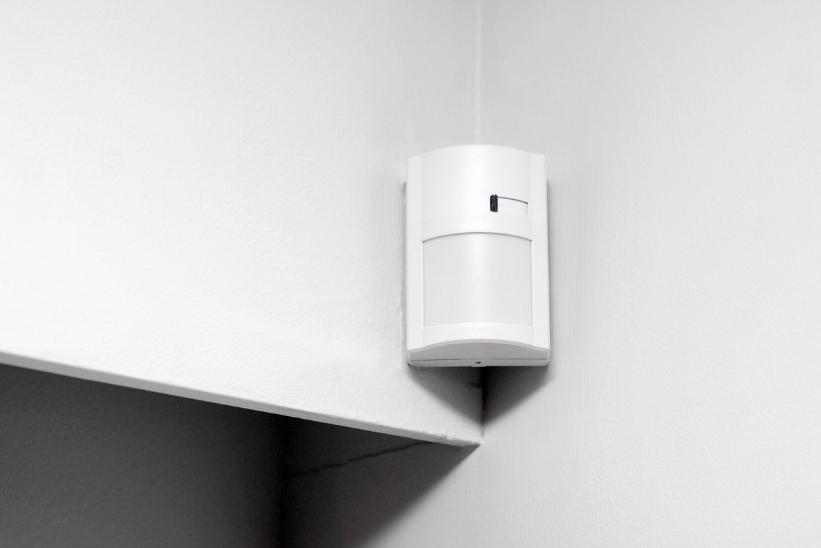A motion sensor is essential in lighting energy-saving and security systems, the sensors will activate the connected lights or cameras only when they detect a motion. Motion sensors can be used as a standalone unit to control an existing light or embedded into lights, light switches, cameras as a whole.
Contents
- What is A Motion Sensor?
- How Does a Motion Sensor Work?
- Motion Sensor Applications
- Indoor Motion Sensor Light
- Outdoor Motion sensor light
- Motion Sensor Light Switch
- Motion Sensor Benefits
- How Far Can Motion Sensor Detect?
- Where to Install Motion Sensors?
- How to Install a Motion Sensor?
- How to Wire a Motion Sensor Light Switch
This motion sensor guide will include everything you need to know about what motion sensors are, how they work, their applications to help you choose the best motion sensors for your home and business. Let’s dive in.
What is A Motion Sensor?
A motion sensor, or motion detector, is an electronic device that uses a sensor to detect and measure nearby movement of people or moving objects. The motion sensor can work as a standalone motion detector that controls your home’s alarm or smart lighting system through hardwire or wifi, OR integrated into lights, light switches, and cameras as a whole product. So the lights, cameras you buy already have motion sensor function built-in, you don’t have to attach another motion sensor to control them.
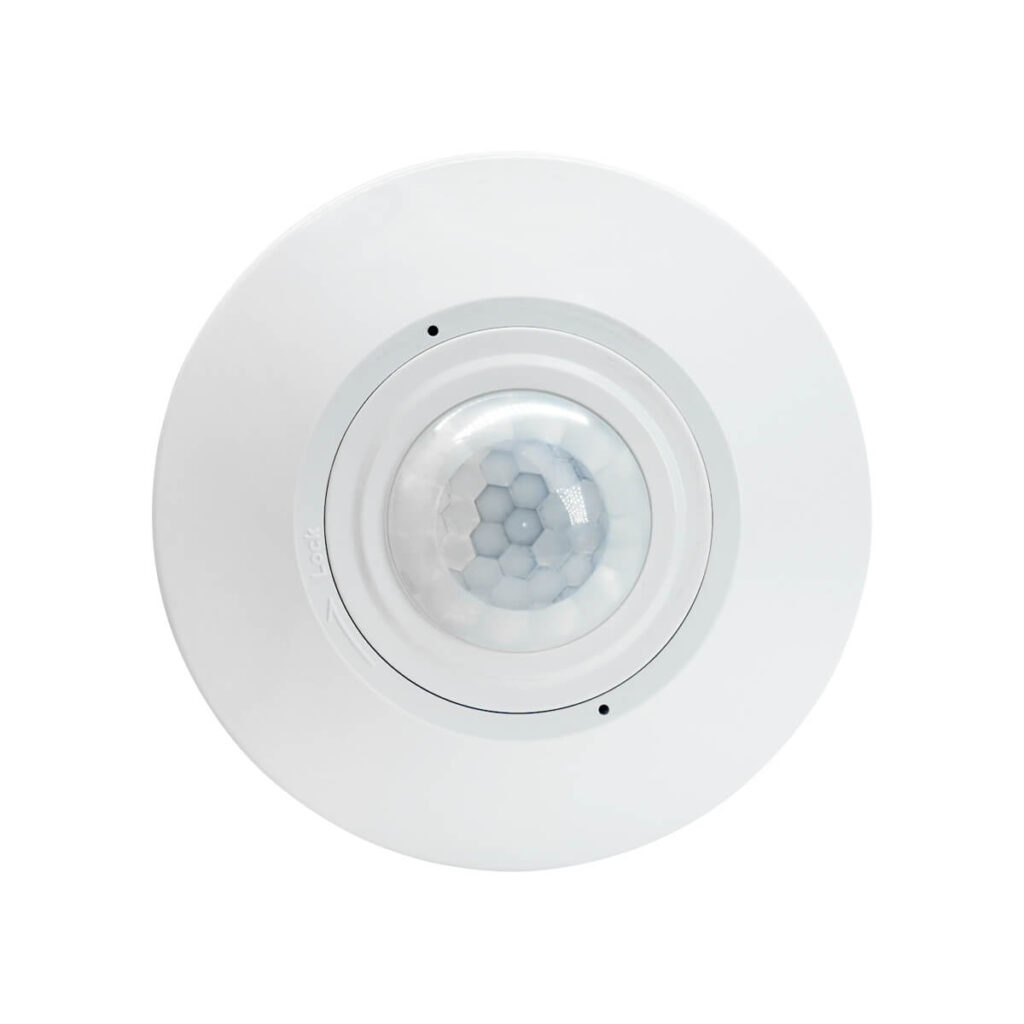
The standalone motion sensors can connect with your smart home system, existing lights or phones. They detect motion and send a signal to the connected system. For example, a motion sensor alarm installed at your home will send you an alert via your phone app to remind you about the motion happened at your house. A motion sensor connected to your smart home lighting system through wifi can control your total lighting.
In more cases, the motion sensors are pre-built into lights or cameras for convenience, so customers can use them directly. For example, a motion sensor light is a light that gets controlled and activated by its built-in motion sensor. A motion sensor light switch is a light switch that gets controlled by its built-in motion sensor, the sensor light switch is also known as an occupancy sensor.
The term motion sensor is often misused because it can refer to a motion sensor component such as or as a motion detector end product. For example, a motion sensor can be used to describe a PIR motion sensor unit, a motion sensor switch, or a motion sensor detector by different people.
Readers should pay attention to its actual meaning according to its context.
How Does a Motion Sensor Work?
Not all motion sensors are made with the same technology for the same approaches. Each type of motion sensor has its advantages in accuracy, reliability, detection range, etc.
Let’s look at the technology used in motion sensors first.
Generally, several technologies used for detecting motions: PIR, ultrasonic, microwave, tomographic and dual-technology.
It would be helpful if you could understand how different technology works in detection motion for you to choose the best sensor that meets your demands.
PIR Motion Sensor
A passive infrared sensor, commonly known as a PIR sensor, IR sensor, passive infrared detector, uses a multi-faceted lens to detect motion from people or moving objects by measuring temperature changes.
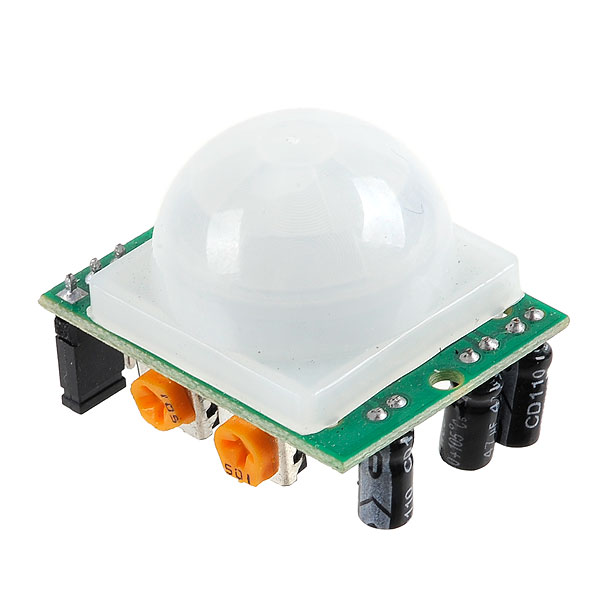
Passive means that the sensor does not emit energy for detection but only passively waits and detects the infrared radiation emitted by or reflected from moving objects or people. Unlike active sensors that need to continuously send out signals to detect motion which uses a lot of electricity, PIR motion sensors consume less power. PIR sensors are very cheap, durable, and are suitable for long-term commercial applications.
PIR sensors can be programmed to low or high sensitivity to ignore small temperature changes for more accuracy and less false detection.
How Does PIR Sensor Work?
PIR motion sensors have a thin layer of pyroelectric material and two slots with materials that are sensitive to infrared. When people walk near or past a PIR motion sensor, the sensor detects the differences of infrared received between the two slots. The infrared or temperature change is considered and registered as a motion or movement.
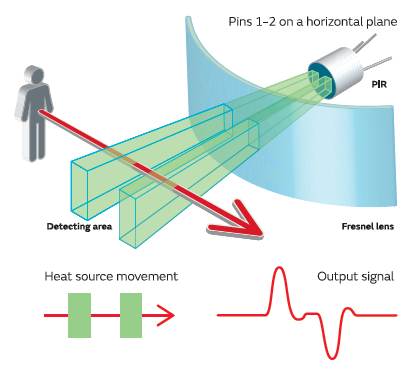
In simple words, PIR sensors detect the rapid heat changes coming from human bodies. But all creatures emit infrared radiation, and animal likes dogs may get detected as a human motion that causes the sensor to make false alarms. In most cases, we only want the PIR sensor to react to human actions, not to distract from noise sources like animals or hot coffee machines. PIR sensor heat detection range is usually set near human heat ranges, so PIR sensors will only react to motions that have similar temperate to human activities.
Human bodies have a skin temperature of about 34 degrees, radiating infrared at a wavelength of 9 to 10 micrometers. Restricting a motion sensor within a sensitivity of 8 to 12 micrometers can improve the accuracy significantly.
Here is an example of how a PIR motion sensor light work to help you understand:
When no one is near, the PIR sensor detects the ambient infrared radiation from the background. When a person comes, the sensor compares the infrared differences between the two slots, knowing the heat increase, noticing a man coming, and turning the light on.
When the person leaves, the second slot will notice the heat drop, meaning the man has left the room, then it will turn off the light.
Get Inspired by Rayzeek Motion Sensor Portfolios.
Doesn't find what you want? Don't worry. There are always alternate ways to solve your problems. Maybe one of our portfolios can help.
Pros
PIR motion sensors are very inexpensive, easy to use and consume little energy. What’s more, PIR sensors are incredibly durable and reliable, so they are most ideal motion sensor solutions for long-term indoor applications.
PIR sensors are suitable for spaces with high airflow and sound noises, where ultrasonic and microwave sensors are not compatible in such situations. The high airflow is a distraction sound noise for the ultrasonic motion sensors to detect actual motion activities, but PIR sensors only detect heat changes and are not distracted.
When you want to monitor and detect motion in a selective area of space, PIR sensor is the way to go. You can restrict its detection coverage by masking part of the lens on the sensor with removable adhesive strips, because PIR sensors need to “see” things. By doing so, you can adjust the sensor to let it only detect a given area to make it more accurate without detecting motion from unwanted areas such as motions outside the room.
Cons
Since PIR sensors need to receive and detect infrared, so PIR sensors require a clear line of sight, it’s important that you place it where the lens won’t be blocked by obstacles like doors and shelves. So PIR sensors are most suitable for small to medium enclosed indoor spaces where the sensor can have a clear line of sight.
PIR sensors are not too sensitive to minor motion changes like typing or turning pages. They are more sensitive to major movements like people walking.
PIR sensors should not be installed near heat sources where rapid heat changes can cause the sensor to detect false motions, such as places near coffee machines and HAVC that may cause rapid heat changes.
The following are active sensors, meaning they will actively send out signals for motion detection. Active sensors would consume much more energy than passive PIR sensors.
Microwave Motion Sensor
A microwave motion sensor emits electromagnetic radiation and receives the reflected waves. The shift in the frequency is considered and registered as a motion activity. Microwave sensors are very sensitive and need to send out microwaves constantly for motion detection.
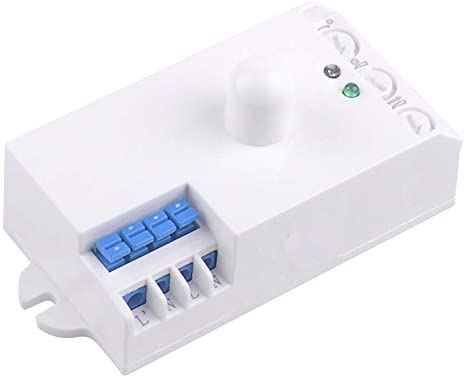
Because of how microwave motion sensor works, the sensitivity can be changed to be less or more sensitive by altering the frequency.
Pros
As microwaves can go through walls and corners, microwave sensors can cover both inside or outside a large area, such as outdoor parking lot and indoor warehouse.
Microwave sensors are highly configurable that they can be set as less or more sensitive to detect certain types of activities to reduce false motion detection and improve accuracy.
More advanced microwave sensors can also detect whether a person is moving towards, away, or randomly. These detectors are helpful in sensing and differentiating between the ordinary movement and intruder movement. This feature of microwave sensors makes them highly reliable.
Cons
Though microwave motion sensors are less expensive to purchase, they are costly to use as they continuously consume a lot of power emitting microwaves.
Microwave sensors are extremely sensitive and usually not accurately configured, so they can cause many false triggers or false alarms and more susceptible to electronic interference.
And microwave motion sensors work at intervals to reduce electricity costs rather than continuously sending out signals and receiving them. So these microwave sensors are frequently designed to cycle from ON & OFF status, which may be an obvious pattern, especially when used on security cameras.
Tomographic Motion Sensor
Tomographic sensors emit radio waves and detect whenever the reflected waves get disturbed. Tomographic sensors are made up of multiple nodes that are linked together, forming a mesh network. The motion is considered and registered when the link between two nodes is broken.
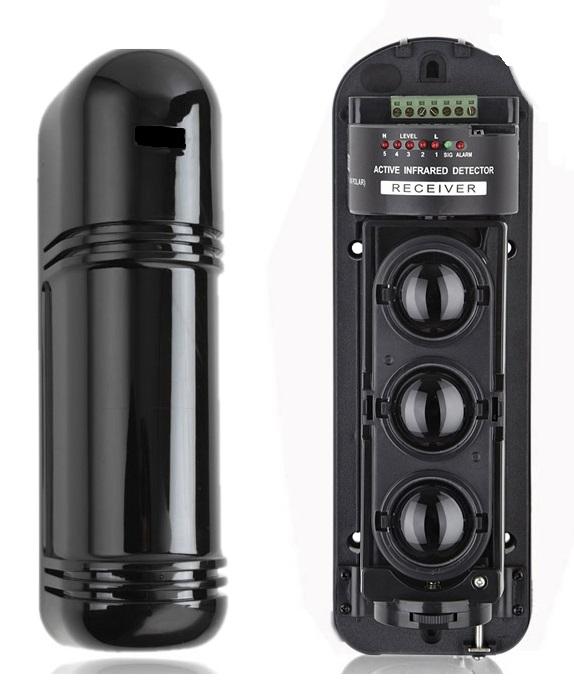
Tomographic motion sensors are very expensive and are often used in commercial areas that require a high level of security like warehouses and professional storage units. Tomographic sensors can cover larger areas compared to ultrasonic and microwave sensors and they can see through walls and objects too.
Ultrasonic Motion Sensor
There are passive and active ultrasonic motion sensors. Most of the ultrasonic motion sensors on the market are active sensors. We’ll cover the passive ultrasonic sensor first.
Passive ultrasonic motion sensors detect particular sounds such as metal striking and glass breaking. These sounds produce sound wave patterns that fall within established normal parameters for the passive ultrasonic sensor to detect. As the sensor only detects received sound waves with pre-set parameters, passive ultrasonic sensors are more likely to create false alarms.
Since passive ultrasonic motion sensors only compare sound signals with built-in parameters, it’s possible for skilled people to bypass the passive sensor without making detectable sounds. Passive sensors are often used in conjunction with PIR sensors to increase the overall sensitivity.
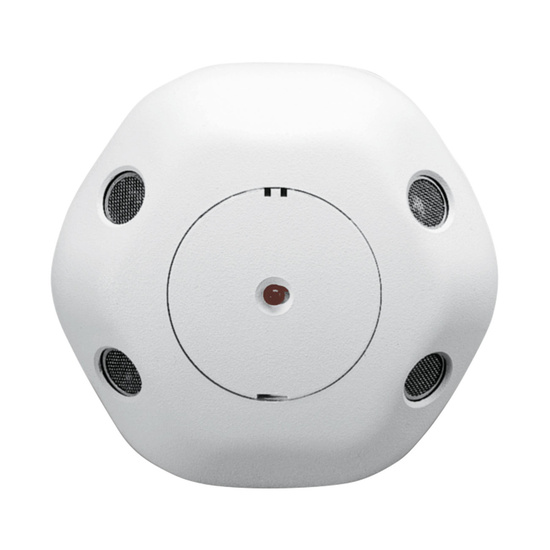
Active ultrasonic motion sensors emit high-frequency sound waves and detect the reflected signal to detect motions looking for disturbances in the sound waves. The sound wave strikes objects within the detection range and will not be disrupted if there is no movement happened. If there is movement or motion, then the sound wave is disrupted by the motion and the sensor can detect the differences in waves from the reflected signals. The sensors can further determine the distance from the target by measuring the time between sending and receiving the signal.
Unlike PIR motion sensor that can detect based on human temperature range, any moving animal, object or human can trigger the ultrasonic motion sensor, which makes it not suitable for many applications.
Pros
Ultrasonic motion sensors are most suitable for open spaces and spaces with obstacles where PIR sensors are not qualified.
Ultrasonic motion sensors are very sensitive and can be configured and calibrated for more accuracy on detection range. They are mostly used indoors as it can detect from many outdoor noise motion sources even like a branch swaying or birds passing.
Ultrasonic sensors are more sensitive to fine motions, makes them great for applications where a high level of sensitivity is required, such as security systems, automatic garage doors, open offices, restrooms, and enclosed stairways.
Ultrasonic sensors are used in animal repellers too. Humans cannot hear the ultrasonic sounds, but animals can listen to these sounds that unsettle them and scare them away.
Cons
As active ultrasonic sensors need to emit sound waves steadily, they consume a lot of electricity and are very pricy.
Ultrasonic sensors are too sensitive to be used in places with many noise sources such as high levels of airflow and outdoor applications.
Dual-Tech Motion Sensor
Dual technology or dual-tech motion sensors use two different technology combined to increase accuracy and reduce false alarms significantly. Usually, there are two types of dual-tech motions sensors: PIR combined with microwave technology and PIR combined with ultrasonic technology.
To activate a dual-tech motion sensor, it’s required for both technology to detect the motion at the same time so there will be fewer false ONs. And the sensor will keep activated as long as either technology is continuously detecting motion to prevent false OFFs.
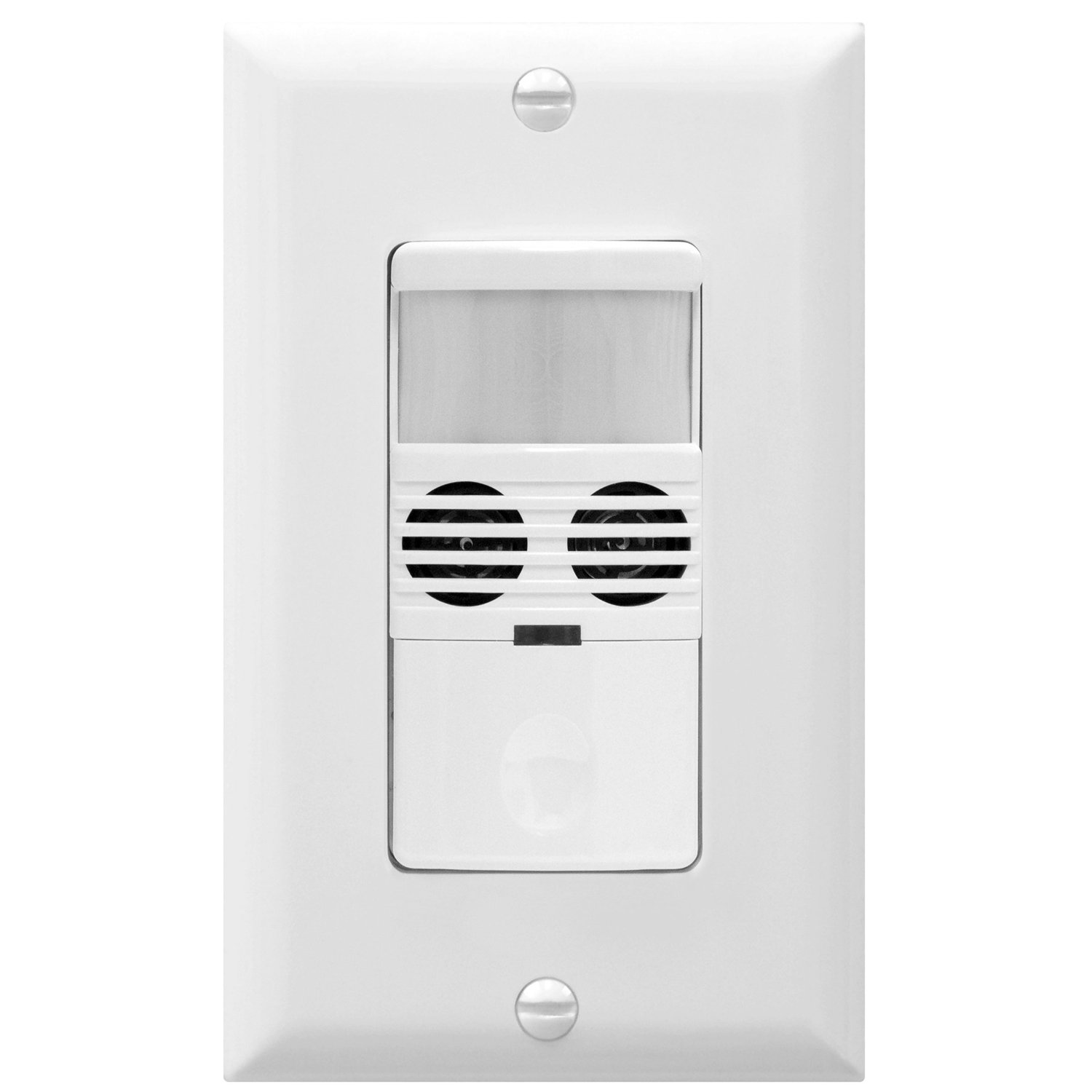
We know PIR sensor consumes little power while either microwave or ultrasonic sensor consumes a lot of electricity. So for a dual-tech motion sensor to be energy-efficient, the microwave or ultrasonic sensor is only triggered after the PIR sensor has detected motion through temperature change first. Then the microwave or ultrasonic sensor will be activated to emit singles to confirm whether it’s an actual motion.
That means a rapid temperature change won’t trigger the dual tech sensor because it does not cause motion that triggers the microwave or ultrasonic sensor. Likewise, an object’s movement also won’t trigger the sensor because it causes no heat change that can trigger the PIR sensor first.
Pros
Dual technology motion sensors are ideal for applications that require high and accurate sensitivity where using only one technology is not adequate.
They are also suitable for large spaces with limited sight of view. Such places include open offices, libraries, common areas, classrooms, conference rooms, and spaces where a higher degree of detection is requested.
Cons
Dual-tech sensors are relatively expensive, making them not suitable for applications where the budget is not enough.
As both sensors are required to detect the motion simultaneously, skilled burglars can bypass either sensor technology without getting caught. For this reason, some people use two motion sensors of different technology separately instead of a dual-tech motion sensor, especially in security systems.
Motion Sensor Applications
Here are some most common and widely used motion sensor applications. If you are searching for a motion sensor, you are highly likely looking for one of these.
Indoor Motion Sensor Light
Motion sensor lights are popular among homeowners, indoor sensor lights are easy to install and user-friendly. Any DIYer can place motion sensor light at their home, almost everywhere.
If you have difficulty installing the lights without proper wiring, many battery-operated motion sensor lights can stick to the wall directly without the need for serious manual work.
Motion Sensor Under Cabinet Light
As the name suggests, under cabinet lights are installed under cabinets to provide lighting where regular lights cannot cover. You can install these lights nearly everywhere, such as wardrobe, under kitchen cupboard, bathroom counter, under stair, shoebox or any dark corner in your house.
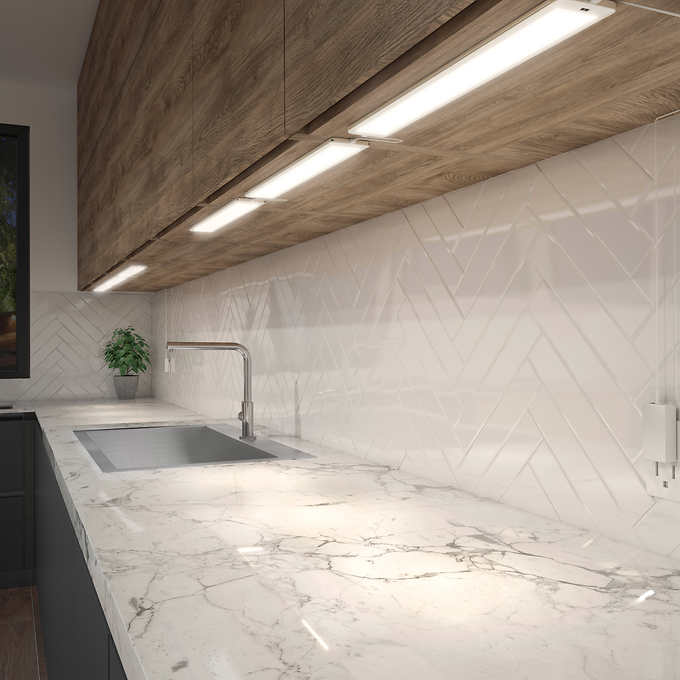
Under cabinet lights usually comes with a built-in magnet, users can easily attach the lights to any iron surface directly. The lights also provide adhesive tape and iron sheet, you can attach the iron sheet to wood and plastic surface with the provided double-sided tapes first, then attach the cabinet light to the iron. They are battery operated and rechargeable, so users do not worry about wiring.
Homeowners love under cabinet motion sensor lights as they are easy to install, use and can be installed anywhere in your house. Without a motion sensor, a toggle switch cabinet light would be wholly meanless and useless. Image if you install the light under stairs, kitchen cupboard or your wardrobe, do you want to turn on and off the light manually every time?
Motion Sensor Night Light
Compared to regular night light that only activates when it’s dark, a motion sensor takes the night light to the next level. Night light with a motion sensor can remain off in the dark and only activate when it detects motion nearby, thus saving more energy. It’s often called the auto mode.
There are two kinds of motion sensor night light on the market: plug-in night light and stick-anywhere night light.
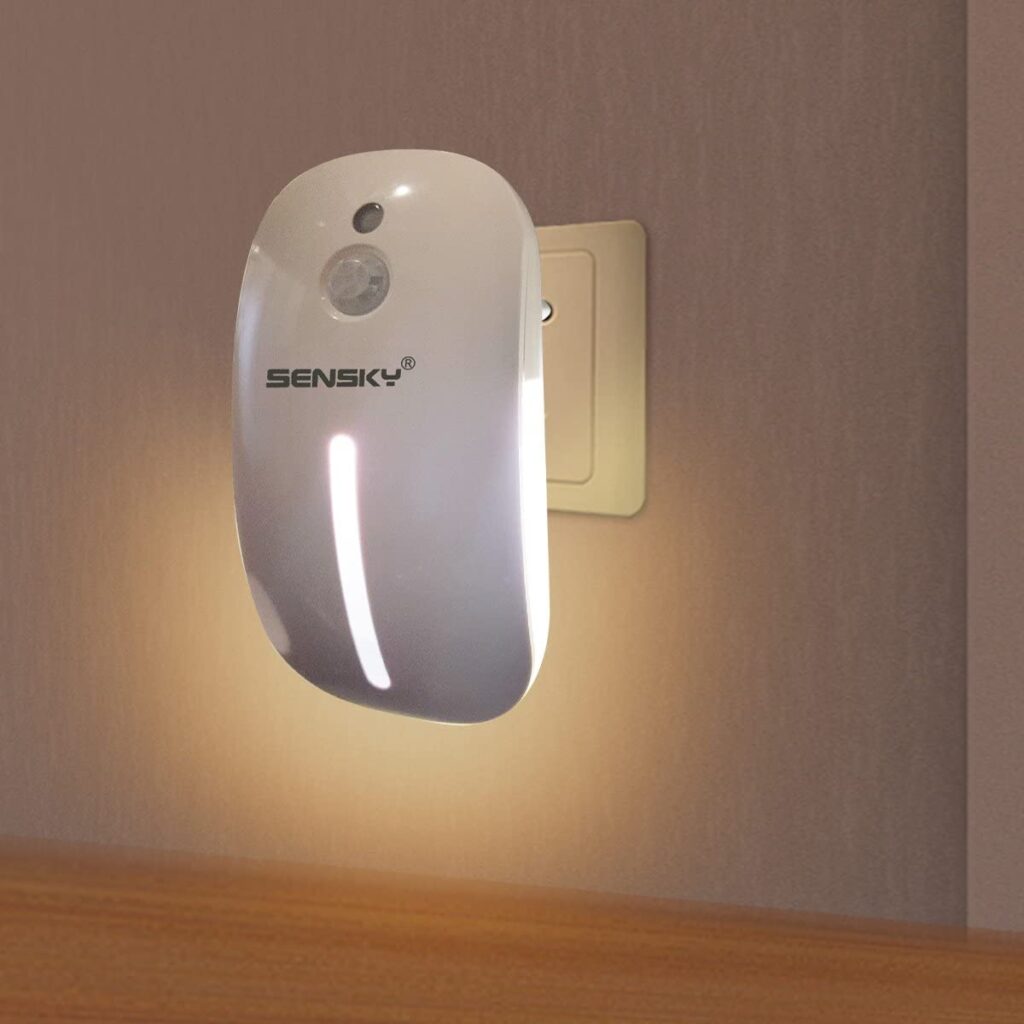
A plug-in motion sensor night light can directly plug into an AC outlet without hardwiring or battery. They are fairly easy to use.
If you don’t have an outlet available where you want to place the night light, you can use a stick-anywhere night light instead. They are battery powered and can be installed anywhere with two-sided tapes.
Motion Sensor Light
If you want fully automatically light, you can use a motion sensor light, especially ceiling mounted.
There are hardwired and stick-anywhere motion sensor lights on the market.
Hardwired motion sensor lights are less popular because it’s easier to use a motion sensor light switch to control the light directly. But for places that only have one outlet boxes that cannot install both a lighting fixture and an independent motion sensor simultaneously, especially on the ceiling, a motion sensor light can solve your problem.
Maybe You Are Interested In
It’s hard to control or configure the mode of a hardwired motion sensor light that has been already installed on the ceiling or the wall, so hardwired motion sensor lights sometimes come with a remote control.
Stick-anywhere motion sensor lights are more popular for their easy installation, but you need to recharge them or change batteries constantly if installed in frequent-visit places.
Motion Sensor Light Bulb
If you only have a light bulb and no place to add another motion sensor, you can also save energy with the help of a motion sensor light bulb.
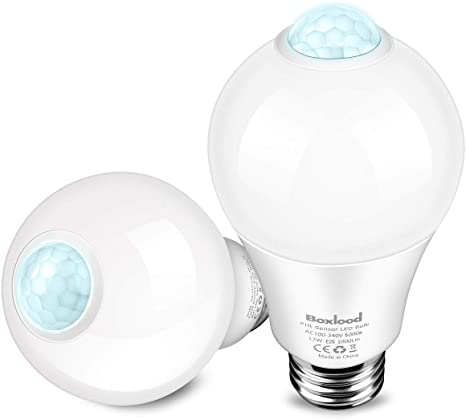
With a PIR motion sensor attached at the tip of the light bulb, the motion sensor light bulb can provide auto-on, auto-off and dusk to dawn features.
The dusk to dawn feature can prevent the light bulb from being activated in the day and can be only activated in the dark for less than 15LUX.
Motion Sensor Light Strip
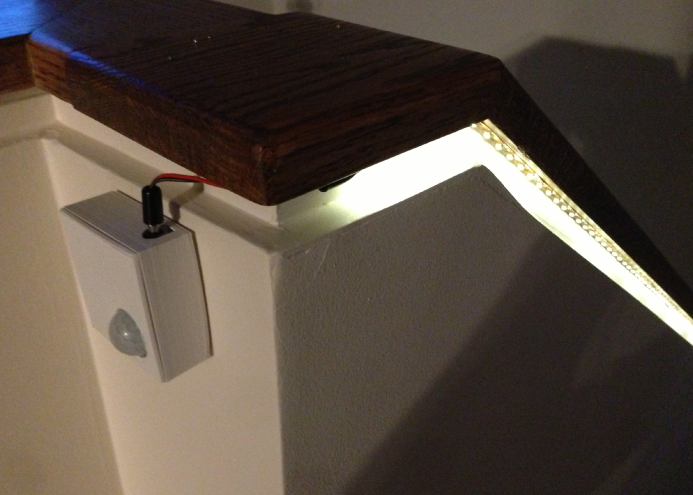
Many modern homeowners prefer motion sensor light strips to decorate their homes, especially on stairs or under the bed.
Pet Motion Sensor
Owners can’t keep an eye on pets all the time. With the help of motion sensors, we can keep pets away from unwanted areas like next to the trash can, countertops, or near rooms to keep curious pets out of certain areas of your home.
For example, pet motion sensor spray can release a quick burst of spray to keep pets off. They can be installed near the trash can, so you don’t have to worry about your dogs and cats digging the trash out. There are also pet motion sensor detectors that are designed to emit warning voices to keep pets off.
Outdoor Motion sensor light
To make the motion sensor light suitable for outdoor usage, manufacturers need to pay more attention to water and wind resistance. Outdoor motion sensor lights need to be more durable and reliable.
Motion Sensor Floodlight
Outdoor motion sensor floodlights are mostly made of metal for the most durability and IP65 waterproof rating to resist weather, UV exposure, rusting and erosion.
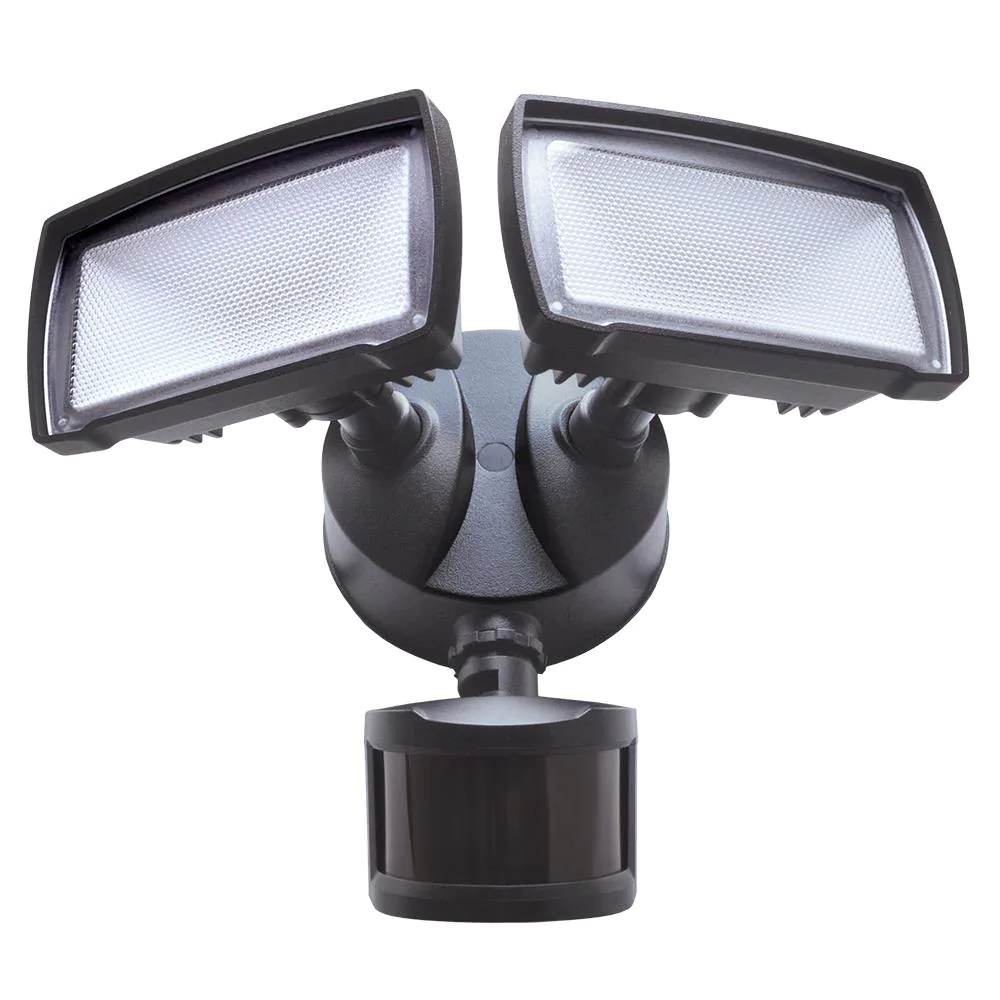
Motion sensors are the commonly added function for floodlight that can increase energy saving, improving the lifespan of lighting fixtures. It makes no sense for the floodlight to be active for the whole night, wasting energy and causes light pollution. With the motion detection feature, motion sensor flood lights are mostly used as the outdoor security light too.
The security motion sensor light can spot moving humans, cars or animals up to 72feet sensing range at 180° detection angle that brings extra safety to your home. They can light the way when you return home in the dark and also discourage potential intruders.
Motion Sensor Solar Light
If you don’t have wiring available for installing the flood light, you can try using a motion sensor solar light instead for the same approaches.
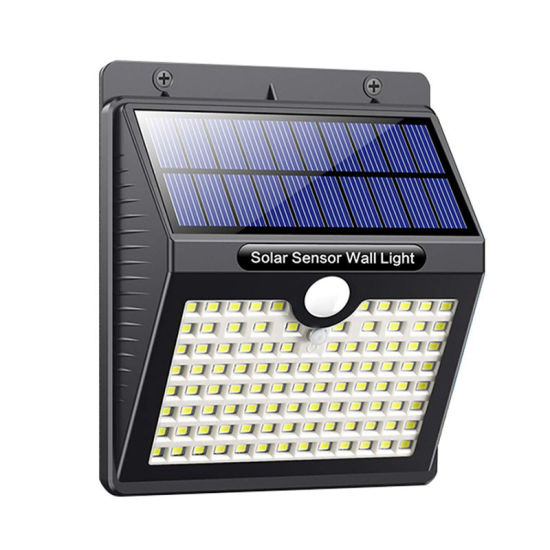
With a motion sensor, the solar light does not have to be on all night, ensuring a much longer usage time. As solar lights do not require wiring, they can be easily installed anywhere you need.
Motion Sensor Light Switch
A motion sensor light switch can automatically control the light to turn on and off when the built-in sensor detects motion or movement. Like a toggle switch, a motion sensor light switch also has a button for people to manually turn ON/OFF the light to bypass the motion detection. For example, when the sensor falsely detects motion and turn on the light, you can manually turn it off, just like using a regular light switch.
Motion sensor switches can be used either for lights, fans or HAVC systems as long as they can meet the current and voltage requirement. But motion sensor switch is the most widely used to control lights. Motion sensor light switches are also called occupancy or vacancy sensors when used for indoor auto lighting control.
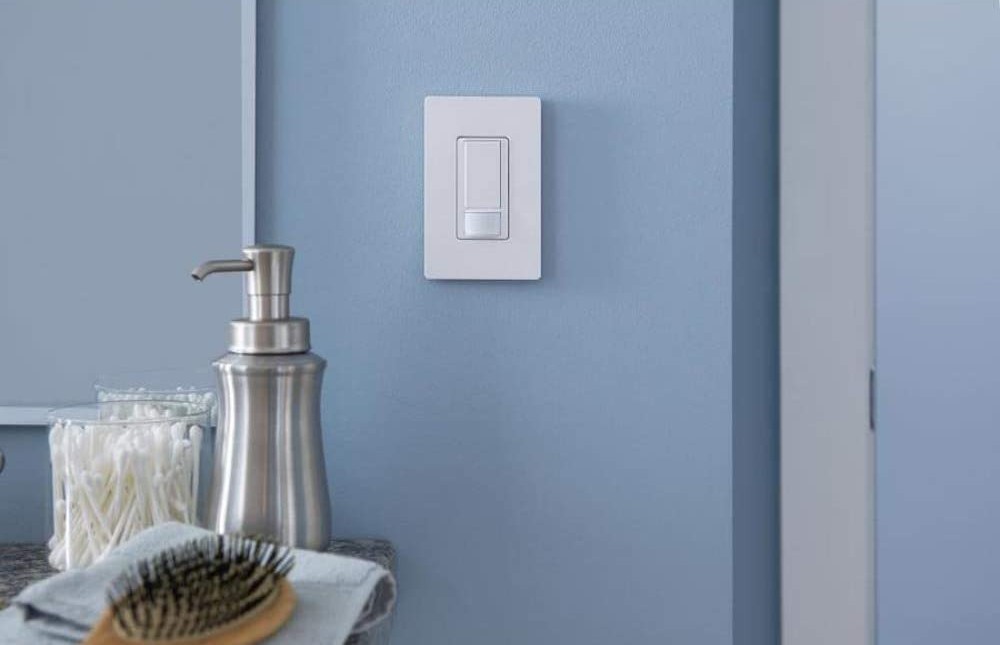
When the motion sensor light switch is set to automatically turn on the light when people are in the room and turn off the light when the room is empty, the sensor light switch is also called an occupancy sensor for its feature to detect whether the room is occupied.
When the motion sensor light switch is set that users need to manually turn on the light switch first, and then the sensor light switch can automatically turn off the light when the room is empty, then the motion sensor light switch is called a vacancy sensor, for its ability to detect whether the space is vacant.
To know more about information on motion sensor light switches, read our detailed guide here.
Motion Sensor Benefits
Let’s break down some of the advantages that you might miss about why you should use a motion sensor.
Improve Security
Needless to say, when most people think about motion sensors, they will first think of motion sensor security cameras and the motion sensor alarm scenes, just like what we’ve seen in real life and in the movie.
Motion sensors are great for detecting thieves, burglary and potential threats. Motion sensor cameras and alarms are among the most needed security systems in commercial buildings, and you can find them nearly in every big building. They are so popular that even homeowners now tend to install cameras and alarms in their homes. They are not pricy and can significantly help boost your home security level.
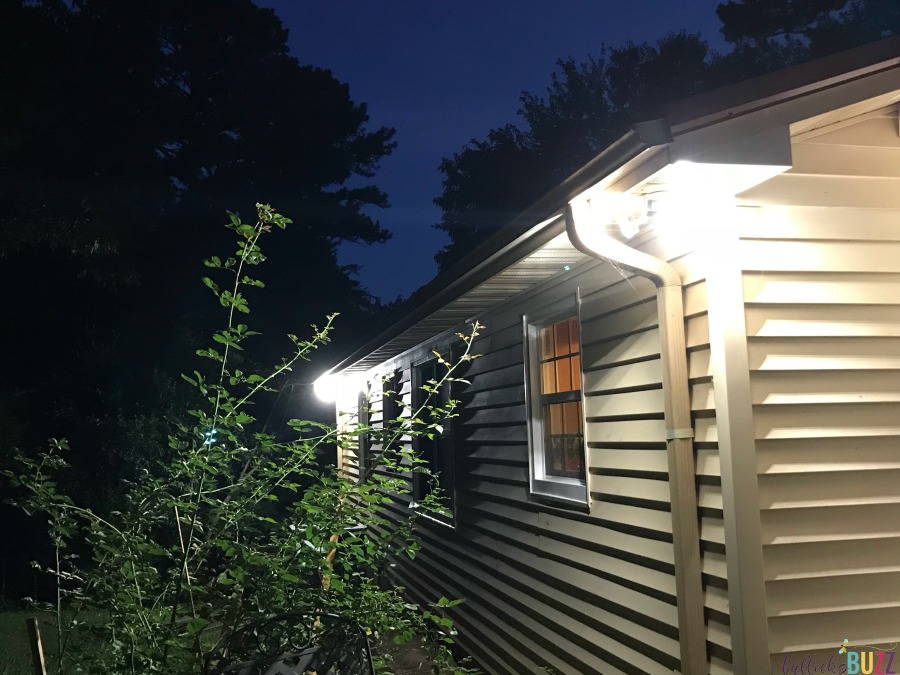
Additionally, motion sensors can improve your indoor security as well.
For offices, ample light can significantly prevent potential thefts. Thefts and burglaries would be much less like to happen if there is ample lighting. With a motion sensor light, the thief might feel like getting spotted when they found the lighting was on for them. They may also assume there are other people in the area, so they may give up the crime.
For homeowners, motion sensors such as night lights and bathroom occupancy sensors can prevent people walking in the dark from accidentally falling down the stairs or finding the light switch with wet hands that might get an electric shock.
Save Energy and Electricity
With the help of motion sensors, lights, cameras are only activated when motion is detected, which can save huge energy and your electricity bills.
Lighting waste is one of the major energy waste in the world. You might not believe it but look at the stats and data here.
According to the US Environmental Protection Agency, By using automatic shutoff, scheduled shutoff such as occupancy sensors(motion sensor light switches), energy savings can range from 40% to 46% in classrooms, 13% to 50% in private offices, 30% to 90% in restrooms, 22% to 65% in conference rooms, 30% to 80% in corridors, and 45% to 80% in storage areas.
According to the Lawrence Berkeley National Laboratory, occupancy-based strategies can produce average lighting energy savings of 24%.
On average, occupancy and vacancy sensors can save 30% to 60% lighting energy in residential and commercial applications, some even up to 80% energy saving.
Act and start to use a motion sensor lighting system for your home today, either a motion sensor light switch or motion sensor lights.
Extend Lifespan for Lights
You may not notice that the lifespan of the lights, cameras can improve by a lot with a motion sensor. With a longer lifespan, your light can work much longer, which can reduce the cost of maintenance in another way.
For example, for a led light outdoor motion sensor, if you use it for 3 hours a day, the lifespan can be up to 30,000 hours, that’s more than 25 years. With a motion sensor, most of the time you won’t even use it up to 3 hours, maybe 0 hours a day if no motion is detected.
Convenience
Image the convenience of motion sensor light can bring you when you go to laundry with hands full or going back from Walmart with a load of products on your arm, especially at night. With a regular light switch, you need first to go look for the switch in the dark, turn it on, go back to pick your things, handle your things and even need to go back and turn the light off.
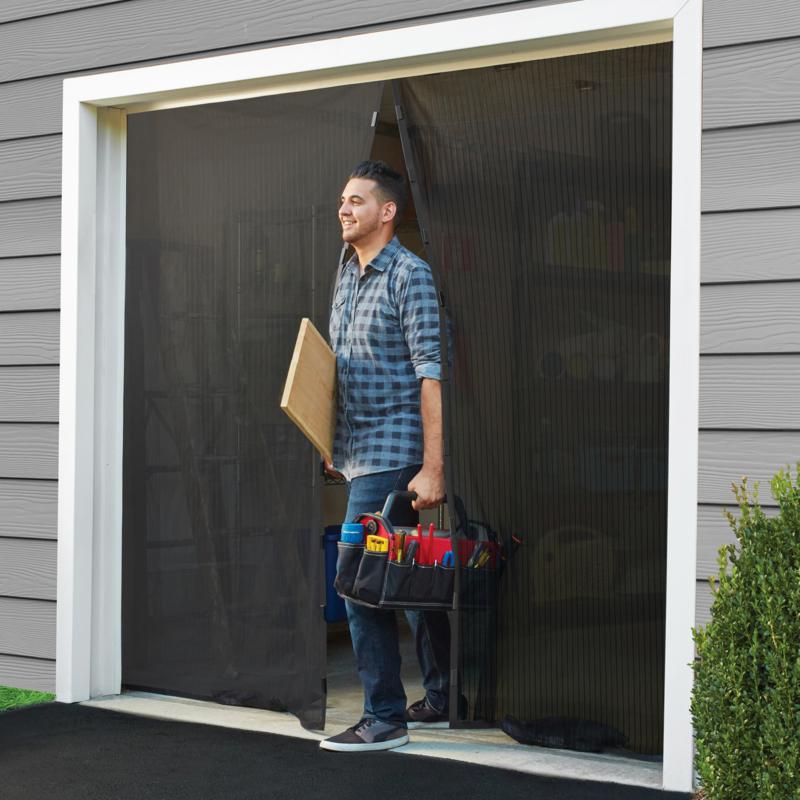
If you use a motion sensor light or install a motion sensor light switch, the light will turn on for you and turn off when you leave the laundry room or garage. You never have to go for circles, only for lighting. Everything becomes intelligent and automatic with the help of motion sensors.
How Far Can Motion Sensor Detect?
Typically a PIR motion sensor can detect motions up to 40 feet. And ultrasonic sensors can detect up to 50 feet.
And PIR sensors have limited sensitivity to minor movement at a distance greater than 15 feet while ultrasonic sensors at 25 feet.
Users should pay attention to the best distance range if they want the best detection performance and accuracy.
While motion sensors from different manufacturers may vary in the distance range, but normally they will fall in the range.
If you want to cover a large detection range, you can install multiple sensors at different locations or network the sensors together.
Where to Install Motion Sensors?
To have the best detecting performance, you should pay attention to where to properly install the motion sensors. Place the sensor where it can have the most and direct coverage to the given area, and make sure the sensors do not receive any noise sources that may cause false alarms.
Looking For Motion-Activated Energy-Saving Solutions?
Contact us for complete PIR motion sensors, motion-activated energy-saving products, motion sensor switches, and Occupancy/Vacancy commercial solutions.
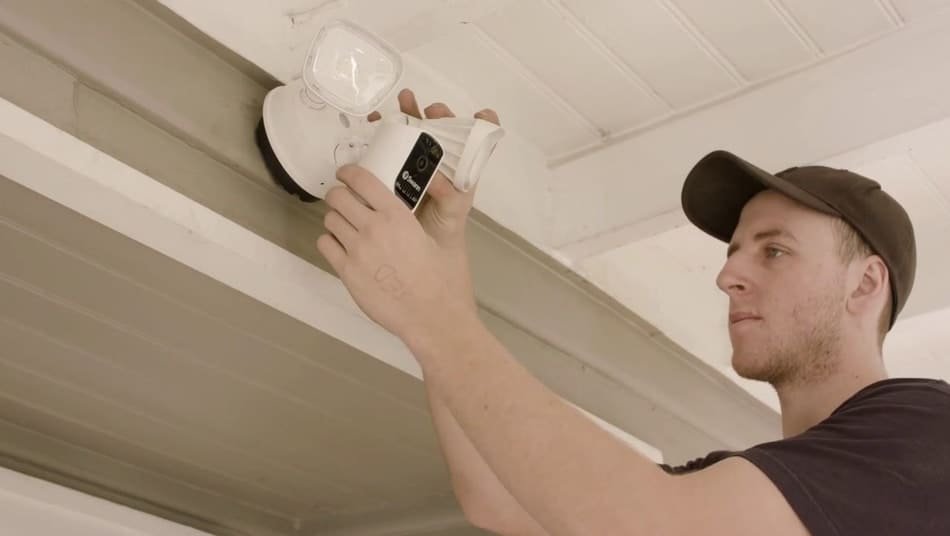
For a PIR motion sensor, make sure the sensor can have a clear sight of view without obstacles because PIR motion sensors need to “see” the target areas. PIR motion sensors need to detect the IR and IR can not pass obstacles.
They should be installed at a proper height for the best result. The best location for a motion is usually in the corner of the room, away from any windows. The device should be placed about 6 to 8 feet off the ground.
Some best places for installing a motion sensor include:
Corners
Place a motion sensor in each room’s corner, pointing toward the doorway. No one will be able to enter without setting off the alarm.
Close to Valuables
Place motion sensors near your most important possessions. No one will be able to approach them without your permission.
Near Bedrooms
Even if you believe a thief would not be able to enter your home through the second floor, it is a good idea to set a motion sensor near your beds. If somebody approaches while you’re sleeping, you’ll be alerted.
Basement
It’s a terrific idea to place motion sensors in your basement. If you have a lot of clutter and obstacles, make sure the sensor won’t be blocked.
On Ceilings
An intruder may already be hunting for motion detectors when they enter the house. The ceiling is an excellent spot they wouldn’t think to look first.
Among Decorations
Hide motion sensors within your home decor so they cannot get spotted easily by intruders.
Some worst places for installing a motion sensor include:
Installed Near Windows
PIR motion sensors can be confused by direct sunlight or heat changes from outside the window. Ultrasonic sensors may detect sounds from outside the window rather than within the room.
Near Heat Sources
PIR motion sensors and their applications may get triggered near heat sources. As most sensor lights use PIR technology, you should be careful and try avoiding placing PIR sensor based products near heat sources. Use ultrasonic sensors instead.
How to Install a Motion Sensor?
Motion sensors are easy to install, no different than installing a normal light or light switch.
Install a motion sensor light is the same as installing a common light because the motion sensor is integrated inside. You can wire according to the instruction and connect load wire, neutral wire and ground wire like a normal light would wire.
If you need to install a standalone motion sensor detector or motion sensor light switch to control an existing light, it’s easy too. Think of the motion sensor like a normal light switch. The motion sensor will control whether to output power to the light. If the motion sensor detects motion, it will output power to the light to turn it on. If it does not detect motion, it will not output power to the lighting, thus keeping the lights off.
To install the motion sensor, simply follow the user manual to connect load wire, neutral wire, ground wire, that’s it.
Here is an example of how to wire a motion sensor light switch.
How to Wire a Motion Sensor Light Switch
To install a motion sensor is easy, you don’t need to call an electrician. Any homeowner can DIY, replace and wire a motion sensor light switch even without basic electrical knowledge.
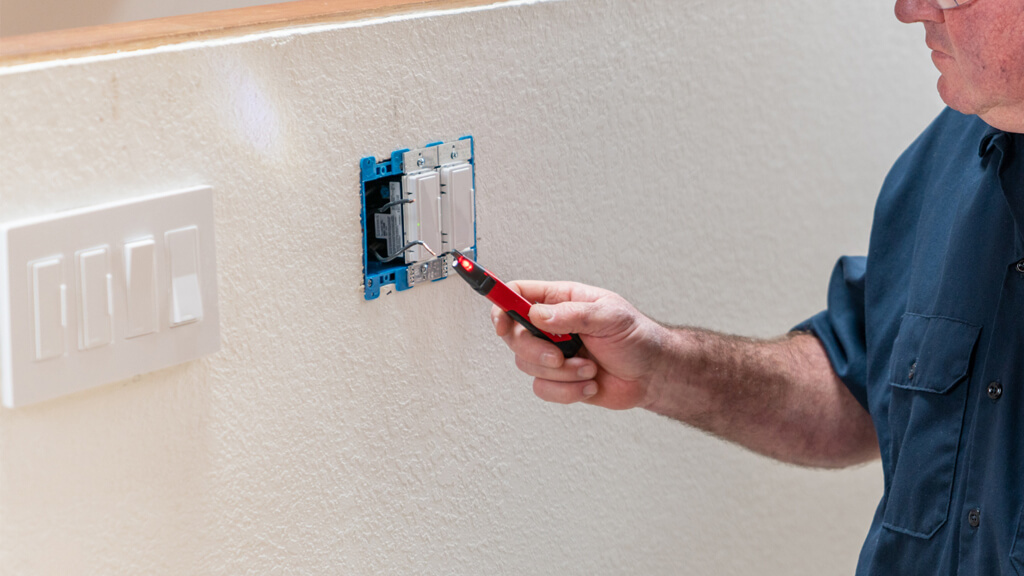
All you need is a screwdriver and you can get it done in under 30 minutes. You might also need a wire cutter to cut wires if they are too long, wire connecters or electrical tapes to connect the wires if they are not provided. But most of the time, you don’t need them. They will be provided along with the new sensor switch you bought.
It would be a similar process if you need to install a motion sensor, light, or camera. Follow the steps.
Step 1: Turn Off Power
Turn off the breaker for the gang box where you want to install the switch. At least test several times to make sure power is off.
Take off the cover plate of the old switch, and remove the light switch from the wall box using your screwdriver.
Step 2: Remove the Current Light Switch
Before removing the current light switch, take a look at the existing wiring and it’s better to take some photos. The wiring of a motion sensor light switch would be no different than a regular light switch. You can copy and apply the wiring to your new motion sensor light switch.
Step 3: Install and Wire the Motion Sensor Light Switch
Think of a motion sensor light switch like this, a sensor switch consists of a regular switch and a sensor unit to control when to switch on and off. For the sensor component to work individually even when the light switch is turned off, an additional complete circus is required to power the sensor itself.
The wiring of a motion sensor light switch is similar to your current light switch, only needs to connect some more wires to power the sensor unit.
Read the installation manual of the motion sensor light switch first and start wiring.
Connect load wire(black) to load wire, line wire(red) to line wire, neutral wire(white) or ground wire(bare copper) to your light switch according to your installation manual.
There is some motion sensor light switch that has four wires, some has three wires. That’s because some sensor light switches require a neutral wire to work but some does not need a neutral wire. It’s called neutral wire required sensor and ground wire required sensor. Don’t get panic if you find the wires are not compatible with your wallbox.
Turn on your breaker and test your light switch to make sure it can detect motion correctly.
Step 4. Fix the Switch
Partially screw the switch into the wallbox, then turn on the power to test the sensors several times.
If everything works, strengthen all the screws and cover the plate, turn off the power if needed.

